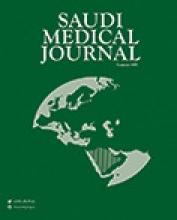Abstract
OBJECTIVE: This research was aimed at describing the pattern of malignancies among 1,491 patients during 1996 through to 2000 and to explore association with age, sex and site of cancers.
METHODS: A research was carried out at a Histopathology Center in Sana'a, Republic of Yemen between the period August 1996 through to August 2000. All specimens were diagnosed by one pathologist based on the International Classification of Disease for Oncology.
RESULTS: Results revealed comparable male: female ratio (1:0.92) and mean age of 46.1 ± 22.8 in males and 44.2 ±18.3. The most common cancers were the gastrointestinal tract malignancies, 22%. Lymph node cancers constituted 16%, followed by head and neck malignant tumors 12%, skin 10%, urinary tract 8%, bone and soft tissue 8%, breast 8%, female genital system 5%, thyroid gland 2% and finally male genital system, bone marrow and central nervous system/eye 2% each. For female patients breast cancers and gastointestinal tract cancers were equally the most frequent malignancies. Skin cancers, followed by gastrointestinal tract and male genital system affected mostly older age patients. While bone marrow followed by central nervous system and eye, then bone and soft tissue cancers were mostly diagnosed in young age patients. Within the gastrointestinal tract liver was the most affected site 33% and adenocarcinomas were the most frequent diagnosed type 42%. Among lymph nodes malignancies non-Hodgkin's lymphoma constituted 42%. Oral cavity cancers constituted 73% of head and neck malignancies, where squamous cell carcinoma constituted 65%.
CONCLUSION: Gastrointestinal tract in general with breast in females, were the most frequent sites of malignancies in the Republic of Yemen. Adenocarcinoma and squamous cell carcinoma were the most frequent types.
- Copyright: © Saudi Medical Journal
This is an open-access article distributed under the terms of the Creative Commons Attribution-Noncommercial-Share Alike 3.0 Unported, which permits unrestricted use, distribution, and reproduction in any medium, provided the original work is properly cited.






